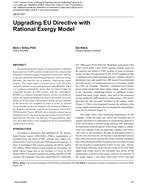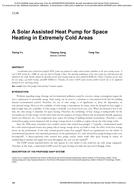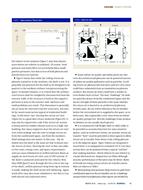Air leakage into and out of buildings affects building durability, occupant comfort, indoor air quality, and energy consumption.Recently, in response to increasing societal concern regarding the environment and rising energy costs, building enclosureairtightness is garnering more attention. Various jurisdictions in North America and worldwide have implemented or are consideringimplementing airtightness testing and/or quantitative airtightness performance requirements into building regulations. Thispaper summarizes select results from a study into the state of the industry with respect to the airtightness of large buildings inNorth America.
As part of this study, airtightness test results from more than 500 buildings located primarily in North America were compiledinto a one-of-a-kind database. The results are presented to demonstrate historical and current airtightness levels as well as toquantify the impact or whole building airtightness regulations on the measured airtightness of building enclosures. Additionally,the results of a survey that asked industry members working in a jurisdiction with mandatory whole-building airtightness testingto respond to questions regarding the impact of the regulations as well as their perception of the regulations are presented. Finally,the paper provides commentary on the difference between air leakage and airtightness and identifies where further research isrequired to allow for more accurate determination of large building air leakage rates.
Overall, this paper provides the foundational information necessary to assess current airtightness performance and theimpact of existing requirements so as to allow for evidence-based widespread adoption of whole-building airtightness regulationsfor large buildings.
Citation: Thermal Performance of Exterior Envelopes of Whole Buildings XIII, Conference Papers
Product Details
- Published:
- 2016
- Number of Pages:
- 8
- Units of Measure:
- Dual
- File Size:
- 1 file , 2.5 MB
- Product Code(s):
- D-BldgConf16-19


